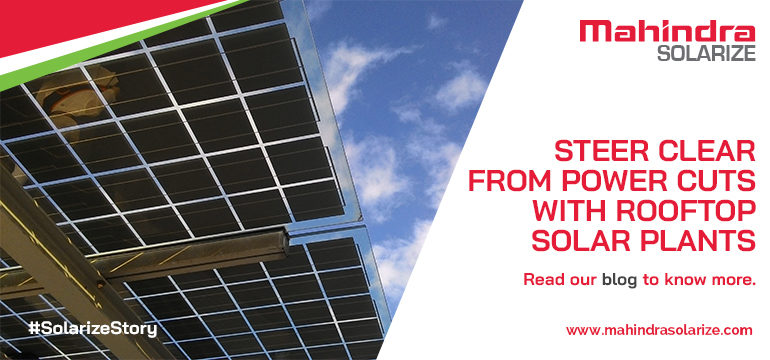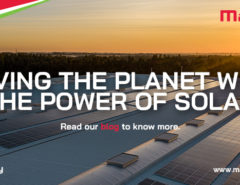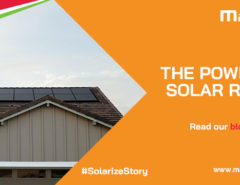It is a well known fact that India’s power sector is largely dependant on exhaustible fossil fuels like coal. And as of 2013, only 81% of the Indian population had access to electricity. While having access to electricity doesn’t rule out the common problem of power-cuts that has become an everyday part and parcel of life. Many people live under the misconception that power cuts are due to the lack of coal, that is hardly the case. Most power cuts are due to structural faults like wiring, problems with sub-station generators or simply the inability of the grid infrastructure to support the demand of electricity.
Although the term ‘global warming’ was coined in 1975, it wasn’t until the late 1900’s that governments and people started taking serious measures to delay it. And it became abundantly clear that the world had to start looking for cleaner sources of energy and methods of operating. Thus began the quest of turning to renewable source of energy.
The most common and abundantly available source of energy, we realized, was the sun itself. Therefore giving birth to a boom in solar power plants that provided an alternative solution to our energy problem. While there was rapid mushrooming of large-scale solar power plants, many home-owners installed rooftop solar PV assets to compound, if not completely substitute, their pre-existing electrical infrastructure.
One of the most common misconception among first time solar panel owners was that their panels were independent of their area’s power grid and that it would continue to supply uninterrupted power in the event of a power cut. However, this, too, is not the case.
Not all panels are independent of the power grid and most of them do not continue to supply uninterrupted power during power cuts because of two factors:
1. Reference Voltage:
The amount of incident sunlight on the panel varies throughout the day, because of clouds, shadows, etc, which directly impacts the power output of the panels. Because this constant variation can cause equipment damage, panels are connected to inverters. The main task of an inverter, connected to a solar panel, is to constantly match the power output of the panels to another source of steady power. This steady source of power may be the power grid, diesel generators or batteries.
And since most household PV assets use inverters that are connected to the power grid, because the amount of power produced cannot justify the use of a diesel generator, their solar panels do not continue to supply power during a power cut even in the presence of enough sunlight.
2. Anti-Islanding:
Though this is a problem seldom faced by home-owners, anti islanding is the second factor. In the event of a power cut, a large portion of the grid is non-energised. This non-energised area is called an island. If the solar panel continuously pumps power into this non-energised portion of the grid, it gives rise to the possibility of electrocution to anyone in close contact with the panels. In order sidestep this risk, the inverter, usually, turns the PV asset off during a power cut.
From the two reasons stated above, it is quite clear that the only real factor that is hindering a solar panel’s ability to produce power in the event of a power cut is the type of inverter being employed. Of which there are four main types:
1. Grid-Tied Inverters:
These inverters, as the name suggests, are completely dependant on the grid. They are primarily designed to supply the power generated by the panels to the grid and to supply the load while grid power is available. This kind of inverter will not allow solar panels to continue to produce power during a power cut because it depends solely on the grid to provide reference voltage.
2. Off Grid Inverters:
These inverters, as the name suggests, are completely independent of the grid. They are primarily designed to work with battery backups and diesel generators. The reference voltage is provided to the panels from the battery backups. While this is a great option for locations with little to no power grid coverage, it is not advisable if the solar panels are meant to work in parallel to your pre-existing electricity connection.
3. Grid Interactive Inverters:
These inverters are independent of both the grid as well as battery-backup systems. It can use either one as and when the need arises. Along with a connection to the grid, these inverters also need a connection to a diesel generator or battery backup so that in case of power failure or cut, it can switch between the two.
4. Hybrid Inverters:
These inverters are also called bidirectional inverters. They are a one system solution for all solar panel related problems. The inverter caters for every possible problem that can arise like, reference voltage, power failure and also has systems in place to curb islanding of the panels. These inverters are best used in plants where there is a requirement to manage power from more than one source.
So clearly, choice of solar inverter largely determines the use and effectiveness of your rooftop solar panels. It is advisable, at this stage, to assess your needs, based on previous electricity bills and power-cut history, and your expectations of PV panels before making a decision. It is also important to understand the needs and limitations of solar panels as well as the options available.
In conclusion, yes rooftop solar panels can be a solution to power cuts. However, it largely depends on the size of the solar PV system and the inverter.




